|
We are delighted to launch a publicly available dashboard that visualises our core monitoring data. The dashboard displays key information about our work, outlining where our partners are based and the progress that we’ve made since June 2022. Context: M&E at Fortify Health Fortify Health has a monitoring and evaluation (M&E) department that sits at the core of our desire to pursue data-driven decision-making. The department supports the overall effectiveness and impact of the organisation by ensuring that the fortified atta that our partners produce meets regulatory standards and also collecting key indicators that monitor the effectiveness and efficiency of our work. We need a robust system in order to do this monitoring properly. In particular:
We identified in late 2022 that our monitoring system could be improved and fully digitised. The system was comprehensive, but we were unsure of the quality of some of the data that was provided and it took too long for us to collect, process and evaluate data to make decisions. The solution: our dashboard We knew we had to resolve this, but it was a formidable challenge. Our M&E team has been working all year to design and implement the solution to these issues. To give a sense of the scale of the challenge: we started the project by making a list of requirements that the monitoring system had to satisfy and ended up with 24 distinct requirements. We’re delighted today to launch the result: a publicly available dashboard that visualises our core monitoring data. The dashboard is the final element of a cost-effective technology stack that our M&E team has built to ingest, store, transform and display our core data. This external dashboard partners with an internal dashboard that our team uses daily and includes many more indicators. The stack encompasses a range of reliable and cost-effective tools. We are using the following tools at each stage:
The implementation of the analytics dashboard involved several key phases. We began by gathering detailed requirements and designing a data infrastructure plan. Our data engineer consultant, Simo Tumelius, played a crucial role in designing and developing the end-to-end data pipeline. We implemented automated data quality tests that generated a daily data quality report for QA monitoring purposes and set up alerts for test failures to notify us if something was wrong with the data. Most often, these errors were caused by issues in data entered into SurveyCTO, which our internal M&E team then resolved at the source. An automated testing system is crucial to ensure data quality, system reliability and to keep us informed about any issues. In addition to the automated tests, we did rigorous manual validation to ensure the calculated KPIs were accurate. Comprehensive training sessions led by Simo ensured that internal M&E team members could effectively use and maintain the system. Finally, we deployed the dashboard, providing both internal and public access to our core monitoring data. Getting here: the implementation process Our M&E team and our excellent data engineer consultant, Simo Tumelius, have worked for months to digitise and develop this end-to-end data pipeline. Our major learnings from the process are:
Our engineer, Simo Tumelius noted that: “One of the keys to success in this project was Fortify Health's internal buy-in and commitment. Although I was hired as an external consultant, their M&E team invested significant time and effort to collaborate with me. Together, we not only designed and implemented the system but also ensured the team understood its intricacies. This commitment ensures that even after I'm gone, they can continue to maintain and develop the system. I was fortunate to have the amazing M&E team to work with: Mr Prasad Bogam (Director of M&E), Mr Ali Akbar (M&E Officer) and Mr Gulshan Swaika (Data Officer). Most closely I worked with Gulshan who became both a student and a partner in the development and validation of the system. I guided him through how the system works and its technical details. His dedication to learning and becoming the system's technical owner impressed me. I was happy to see him develop a keen interest in data engineering and continue his learning with additional courses.” - Simo Conclusion: the outcome We are confident that this new dashboard meets the robustness standards we laid out:
Reflecting on the project, our Director of M&E Prasad Bogam noted that: “The dashboard has been a game-changer for the M&E team and all the key stakeholders. The time spent accessing data has been drastically reduced, allowing us to make informed decisions swiftly. The high quality of data in the dashboard means we can rely on the insights provided and it’s also great that we can now share this data with a wide range of stakeholders. Updating the dashboard is now a breeze, keeping our data current and relevant. This tool has truly streamlined our operations and enhanced our productivity.”
We are hugely excited about the potential applications of the dashboard for our work, as well as for our followers to keep track of our progress with us. Analytics tools like the dashboard are important mechanisms for putting data-driven decision-making into practice. To dive into the dashboard, head to our dedicated page here. Are you interested in more details about the dashboard? Do you want advice about how to set up something similar for your organisation? Please reach out to us at [email protected] For a deeper dive into the implementation process of our new dashboard and its underlying data architecture, we will be publishing a comprehensive case study soon. This case study will provide in-depth insights and lessons learned, offering valuable information for other organisations looking to enhance their M&E data analytics.
0 Comments
Fortify Health has signed a partnership with Shayona Industries, a key equipment vendor. Shayona Industries will provide Fortify Health with critical equipment to support large-scale, cost effective fortification of wheat flour in India. To fortify wheat flour (or chakki atta), millers add key micronutrients into wheat flour before packaging. Fortify Health supports our mill partners to add iron, folic acid and vitamin B12 to their wheat flour. There is a wealth of evidence that fortifying wheat flour with these micronutrients can have a meaningful impact on reducing and preventing iron deficiency anaemia. What equipment do mills need to fortify wheat flour? Millers use a piece of equipment called a microdoser to add the micronutrients (or premix) to their flour. The microdoser provides a continual and consistent supply of diluted premix into the flow of wheat flour. Fortify Health provides its mill partners with microdosers without charge and also trains staff at each mill to calibrate their microsoders, taking into account the unique characteristics of each mill. Shayona Industries will supply microdosers to Fortify Health’s mill partners under the newly signed partnership. Microdosers are critical to the fortification process; they must be manufactured according to strict requirements to ensure that they release the appropriate amount of premix into the wheat flour being fortified. The appropriate amount of premix must be added to the flour because the Food Safety and Standards Authority of India prescribes a strict range for the amount of micronutrients to be added to fortified wheat flour. In addition, fortified flour will only be safe and effective for beneficiaries if it is fortified with an appropriate amount of premix. About Shayona Industries
Fortify Health went through an exhaustive, open tender process to identify the most appropriate vendor to support its intervention. We are happy to say that Shayona passed all technical tests with flying colours and was highly cost-effective in its proposals. We look forward to a long-term partnership with Shayona Industries, who are a three-generation, family owned business based in Ahmedabad, Gujarat. Looking forward In future, Fortify Health plans to undertake experiments to pilot innovative technologies to increase the cost-effectiveness and functionality of microdosers. Stay tuned for more exciting updates on this front! By Brendan Eappen, Chair of the Board and Co-Founder at Fortify Health Early last year, Nikita Patel, Fortify Health’s longstanding Co-founder and CEO, shared her intention to transition out of Fortify Health. In the second half of 2023, Fortify Health launched a competitive CEO search, drawing highly qualified external and internal applicants. This process culminated in the selection of an exceptional new CEO of Fortify Health. Since then, the Board and Nikita have been working to ensure a smooth handover to the next CEO of Fortify Health. Meet Tony
Tony has wide ranging work experience across monitoring and evaluation, management consulting, and law. Tony received his law degree from The University of Queensland and subsequently completed an MBA at Yale University and Masters of Law from University of Sydney. Before joining Fortify Health, Tony worked at IDinsight, where he focused on leveraging data and evidence to alleviate poverty. He sought out a position at Fortify Health in order to bring data and evidence to bear on the direct improvement of lives through the reduction and prevention of iron-deficiency anaemia. Tony brings a wealth of management experience, strategic decision making skills, and institutional knowledge to the role of CEO. He will decisively facilitate Fortify Health’s evolution into its next stage as an increasingly major contributor to the fortification landscape in India, with plans for further rapid scale-up with integrity and purpose. He formally took on the role in January 2024. We are very excited for Tony’s leadership as Fortify Health continues to pursue its mission to enable access to micronutrient-rich wheat flour to reduce and prevent iron deficiency anaemia. Tony will be driving forward some major work over the next one year:
With appreciation to Nikita
Nikita has had a tremendous impact on the organization at every stage: crafting its early strategy, establishing key partnerships, securing funding, building a team, and overseeing implementation through the present stage of early scale-up. Nikita’s enduring and trustworthy leadership has played a key role in securing $10 million across 3 GiveWell Incubation grants to reduce anaemia at scale in India. So far, an estimated 2.5 million beneficiaries are consuming fortified flour facilitated by Fortify Health’s programs each month (estimate for December 2023).
Since its inception, countless members of the Fortify Health team have been collectively responsible for the evolution of the organization. In celebrating Nikita’s contributions over the past 6.5 years, we must recognize that among her most critical work has been building a community of exceptional colleagues who have advanced the organization beyond our most ambitious dreams. Nikita’s person-centered management has been directly responsible for the growth of the incredible team that have made Fortify Health’s vision a reality. Nikita’s genuine care for the people around her is reflected in our collaborative, warm, and fair team culture and further validated by our team satisfaction surveys. She has also expertly managed challenging periods during the organization’s journey, ensuring that the years of investment in Fortify Health could materialize into real health impact. With that said, we are incredibly grateful to Nikita for her years of service to Fortify Health. We are excited that she will now be joining Akhil Bansal, Garvita Chawla and me as a member of Fortify Health’s board; in this capacity, Nikita will continue to be actively engaged in providing strategic direction and oversight to Fortify Health. While Nikita will surely be missed, we are all eager to see Fortify Health further its impact under Tony Senanayake’s leadership. - Brendan Eappen, Chair of the Board and Co-Founder at Fortify Health Fortify Health is acting as the technical partner to the Andhra Pradesh State Civil Supplies Corporation Limited, the nodal agency for distributing grains for the Andhra Pradesh (AP) Public Distribution System. Fortify Health is helping to support the distribution of high-quality fortified chakki atta (wheat flour) to approximately fifty lakh (5 million) beneficiaries at risk of anaemia in Andhra Pradesh through this project. This is the first formal partnership between Fortify Health and a state government in India. It is a significant step forward in Fortify Health’s work to reduce and prevent iron-deficiency anaemia. Context In India, state governments distribute staple food products, including chakki atta, through social safety net programmes (SSNPs). It is estimated that over half the population of India are covered under the largest SSNP known as the Public Distribution System (PDS). One of Fortify Health’s key aims is to assist state governments who administer SSNPs to distribute food products that have been fortified with vital micronutrients. Fortify Health works with SSNPs for three reasons: 1. Targeting: The people who receive food through SSNPs are typically at higher risk of anaemia; 2. Breadth of Impact: SSNPs generally have a very large footprint, reaching millions of people; and 3. Limited Behaviour Change Required: SSNPs have already established supply chains that distribute food products effectively. Fortifying these food products therefore requires little to no behaviour change on the part of beneficiaries. Andhra Pradesh Partnership
The AP government announced plans to distribute fortified chakki atta through its Public Distribution System in mid-2023. Fortify Health came on board in October 2023 as the technical support partner for the project. Fortify Health has been able to bring its 6+ years of experience in high-quality monitoring of fortification processes for chakki atta to the project. We have been helping the AP government to ensure that the chakki atta that it distributes to lakhs of people complies with regulatory standards set by the Food Safety and Standards Authority of India (FSSAI). The scale of the project is large; by December 2023, the AP government distributed more than 15,000 metric tonnes of fortified chakki atta to beneficiaries. Looking forward Over the coming year, we hope to continue supporting the government of Andhra Pradesh to supply fortified chakki atta through its Public Distribution System. Our partnerships team will also be liaising with other state governments across target states to identify new opportunities to support fortification in SSNPs. To learn more about our partnerships work, please visit our website at Our Partnerships Work - Fortify Health. Fortify Health conducted a fortification workshop for the staff of Feeding India on the 27th of September 2023 at Feeding India's office in Gurgaon. The workshop was a useful opportunity for Feeding India and Fortify Health teammates to discuss the problem of anaemia in India and how the two organisations can work together to address that issue. The workshop was the first formal event in the broader collaboration between Fortify Health and Feeding India launched in early September 2023. As part of this collaboration, Fortify Health and Feeding India will work closely to generate awareness about fortification and encourage Feeding India’s partners to provide fortified wheat flour in their meal programmes. The primary objective of this initial two-hour workshop was for the Fortify Health team to provide an introduction to chakki atta fortification and Fortify Health’s ongoing work in India to Feeding India staff and to discuss potential collaboration opportunities between Fortify Health and Feeding India. During the session, Fortify Health’s team explained the role of fortification in addressing anaemia in India, the process of chakki atta fortification and what Fortify Health does to support millers across India to fortify chakki atta. The team even demonstrated one of the tests Fortify Health’s partners use to check the quantity of iron in flour (pictured)! Ashwin Mb, Associate Director of Partnerships at Fortify Health commented that “Feeding India staff were super invested into the workshop. They were engaged through the sessions, asked incisive and thought-provoking questions, and shared innovative ideas on how FH and FI could work together to tackle malnutrition together. We are excited to take our partnership to the next level.”
Thoughts from Vishal Kumar, Head of Feeding India, “FH’s session captured a very informative journey towards how fortification can be a solution towards curbing malnutrition. We are delighted to have FH as our knowledge partners with whom we will be able to expand our horizons of interventions to make India malnutrition free.” About Feeding India: Feeding India, powered by Zomato, is a not-for-profit organisation dedicated to eradicating hunger and improving malnutrition rates in India. They work toward this mission by supporting large-scale systemic interventions as well as providing essential food support to underserved communities in the form of raw grains and freshly cooked food. For more information, please visit https://www.feedingindia.org/ About Fortify Health: Fortify Health is a not-for-profit organisation that works to enable access to micronutrient-rich chakki atta to reduce and prevent iron-deficiency anaemia. Fortify Health does this through three key workstreams: 1. We support millers to cost-neutrally add micronutrients to chakki atta in the open market; 2. We work with governments in India to mainstream wheat flour fortification through social safety net programmes; and 3. We conduct monitoring and evaluation of our activities to inform the public about the value of food fortification. For more information about Fortify Health’s work, please visit https://www.fortifyhealth.global/who-we-are.html/ Fortify Health and Feeding India are delighted to announce a partnership to advance their shared vision of a healthier, better-nourished India. Feeding India by Zomato is an established not-for-profit organisation designing interventions to reduce hunger among underserved communities in India. Fortify Health is also a not-for-profit organisation, with a mission to enable access to micronutrient-rich wheat flour to reduce and prevent iron-deficiency anaemia. The partnership will bring together Fortify Health's unique experience in supporting and monitoring chakki atta fortification in various Indian states with Feeding India’s extensive networks with on-ground non-profit partners working in education. Under the partnership, Fortify Health and Feeding India will work closely to encourage and support Feeding India’s partner organisation to distribute fortified chakki atta. Feeding India will assist its partners to procure and provide fortified chakki atta to the vulnerable communities they serve. Fortify Health will engage with partners to explain the benefits of fortification and also support them in monitoring the quality of the chakki atta they provide. Vishal Kumar, Head of Feeding India, said: "With real-world evidence highlighting the transformative impact of fortification, this collaboration between Feeding India and Fortify Health represents a significant step forward in our mission. Together, we aspire to not only raise awareness about food fortification but also ignite actionable change through our volunteer network of Poshan Champions and our partner organisations in the Daily Feeding Program." Tony Senanayake, Chief Strategy Officer at Fortify Health, said: “Feeding India is a Pan-Indian, household organisation that is doing great work to bring nourishment to underserved populations. Fortify Health looks forward to supporting Feeding India on their journey and to bringing greater recognition to the highly cost-effective, evidence-based solution of wheat flour fortification.” About Feeding India:
Feeding India, powered by Zomato, is a not-for-profit organisation dedicated to eradicating hunger and improving malnutrition rates in India. They work toward this mission by supporting large-scale systemic interventions as well as providing essential food support to underserved communities in the form of raw grains and freshly cooked food. For more information, please visit https://www.feedingindia.org/ About Fortify Health: Fortify Health is a not-for-profit organisation that works to enable access to micronutrient-rich chakki atta to reduce and prevent iron-deficiency anaemia. Fortify Health does this through three key workstreams: 1. We support millers to cost-neutrally add micronutrients to chakki atta in the open market; 2. We work with governments in India to mainstream wheat flour fortification through social safety net programmes; and 3. We conduct monitoring and evaluation of our activities to inform the public about the value of food fortification. For more information about Fortify Health’s work, please visit https://www.fortifyhealth.global/who-we-are.html/ Fortify Health is thrilled to announce that it has established a partnership with the Food Fortification Initiative (FFI) to support wheat flour fortification in India. FFI is an internationally-recognised organisation that works with governments and other partners to support the fortification of wheat flour, maize flour and rice across the world. Under the partnership, Fortify Health and FFI will work together to support government social safety net programmes to provide micronutrient-rich wheat flour to vulnerable communities in various Indian states.
The partnership will take advantage of each organisation’s unique experience and resources to support FFI and Fortify Health’s shared vision for a healthier world. It will draw upon FFI’s deep experience of working with governments and implementing agencies while leveraging Fortify Health’s strong ‘on the ground’ presence and existing relationships with millers across India. Fortify Health and FFI will work closely to assist government partners to implement fortification in their social safety net programmes. Mr Scott Montgomery, Director of Food Fortification Initiative mentioned: “More than half of all women and children in India suffer from micronutrient deficiencies that have immediate and long-term effects on their health. And yet we have a highly effective, proven intervention that has reduced micronutrient deficiencies in countries across the world, including India, over the past 100 years: food fortification. We look forward to partnering with Fortify Health and our public, private, and civic partners in India to develop fortification programs that build stronger futures.” Tony Senanayake, Chief Strategy Officer at Fortify Health, mentioned: “Chakki atta fortification is a cost-effective, evidence-backed intervention that can help reduce and prevent iron-deficiency anaemia. Fortify Health is excited to partner with FFI to scale chakki atta fortification to those who are most susceptible to the insidious challenges of anaemia through social safety net program partnerships with the government. Furthermore, we welcome greater collaboration with like-minded organisations within the sector to leverage core competencies and reach beneficiaries in need.” About Food Fortification Initiative: FFI is a public, private and civic partnership that aims to improve health globally by assisting governments, regional bodies, food producers and implementing agencies to implement and monitor food fortification programmes. For more than 20 years, FFI has worked across geographies to support the large-scale fortification of flour and rice with essential nutrients like iron, folic acid, and zinc to combat micronutrient deficiencies and their consequences, including iron-deficiency anaemia and birth defects of the brain and spine. About Fortify Health: Fortify Health is a non-profit that works to enable access to micronutrient-rich chakki atta to reduce and prevent iron-deficiency anaemia. Fortify Health does this through three key workstreams:
For more information about Fortify Health’s work, please visit https://www.fortifyhealth.global/who-we-are.html For more information about FFI’s work, please visit https://www.ffinetwork.org/ Fortify Health is pleased to announce a collaboration with the Centre for Rural Development and Technology (CRDT) at the Indian Institute of Technology (IIT) Delhi. This partnership aims to conduct a validation study for iCheck iron, a rapid testing device for determining iron rates in fortified chakki atta.
Fortify Health is on a mission to enable access to micronutrient chakki atta in order to reduce and prevent iron-deficiency anaemia. This collaboration with IIT Delhi's CRDT, a renowned academic unit with over 300 high-impact publications, aligns with our aim to improve the quality of fortified chakki atta distributed in India. The iCheck iron validation technology, developed by Bioanalyt in Germany, is a rapid testing device used by Fortify Health to test the added iron (from NaFeEDTA) in fortified atta. While the manufacturer has conducted primary validation for different iron sources, the unique variability of Indian atta necessitates a separate validation process. The project aims to inform external stakeholders, including academics, industry professionals, and policymakers, about the reliability of iCheck iron test results for wheat flour in Indian settings. The primary focus of the validation will be on chakki atta, with an additional matrix effect study on maida and iron source as NaFeEDTA. We look forward to sharing the results and learnings from this study with the general public. Fortify Health will implement the study by conducting the experimental activities, while IIT Delhi will provide technical oversight and expertise on the experimental design, the validation process, data analysis, interpretation, and dissemination of the findings. Tony Senanayake, Chief Strategy Officer of Fortify Health, noted: "By combining IIT Delhi's technical and academic expertise with our on-the-ground implementation focus, we hope to amplify the impact of data and evidence generated by this project. This will ultimately support our goal of reducing and preventing iron deficiency anaemia in India and fortifying India for the 21st Century." Prof. Hariprasad P., Associate Professor at IIT Delhi, mentioned: “Anaemic conditions are brought on by inadequate daily iron intake or the body's low ability to absorb iron. It prevents the biosynthesis of haemoglobin, which lowers the body's supply of oxygen and causes various connected health issues. The National Family Health Survey (NFHS) - 5 reports raised the alarm about the increasing anaemia among Indians. The most effective and scientifically validated approach to resolving this issue is food fortification. Earlier, fortification of salt with iodine and oil with vitamins had remarkable success. However, iron fortification through food has its own challenges, such as scalability, economics, uniformity and quality, distribution, shelf life, regulations and policies, especially in a country like India, which is home to 17% of the world's population and has a very diverse population in terms of religion, culture, and demographics. This study collaboration between Fortify Health and IIT Delhi intends to solve present and future problems brought up at various stages of food-iron fortification programmes in India.” For more information about Fortify Health and this collaboration, please visit https://www.fortifyhealth.global/ About Fortify Health Fortify Health is a health-focused organization dedicated to enabling access to micronutrient-rich chakki atta to reduce and prevent iron-deficiency anaemia. By adding value to chakki atta through fortification with Iron, Folic acid, and Vitamin B12, Fortify Health aims to improve the nutritional intake of millions of Indians. About IIT Delhi The Indian Institute of Technology Delhi is a public technical and research university located in Delhi, India. It is one of the oldest Indian Institutes of Technology in India. The Centre for Rural Development and Technology (CRDT) at IIT Delhi is renowned for developing and disseminating technologies to address rural India's challenges. Team retreats or offsites provide a unique opportunity to build connectedness, motivation and communicate with your whole team. However, they can be a daunting event to prepare for and often do not live up to their potential. In this post, we share some tips on how to prepare content for a team retreat. Recently, Fortify Health held a full team retreat in Bhopal, India. Fortify Health is a non-profit organisation with the mission of enabling access to micronutrient-rich wheat flour to reduce and prevent iron-deficiency anaemia. Altogether 36 teammates from across India and the world gathered for a three-day retreat, which was then followed by a smaller, 2.5 day leadership retreat. In a feedback survey, participants gave a score of 4.8 out of 5 (likert scale) on the statement, ‘I feel much more energised and motivated for my work after the retreat.’ We've learned many valuable lessons as we prepared for our recent retreat, and we'd like to share them with you in this blog post. Here, we provide a high-level process for preparing for your next team retreat and some of the lessons we learned along the way. It must be noted that we are far from experts when it comes to event planning. However, event planning can often be very expensive, and we hope our experiences may be able to support you in the future. We break the process of preparing content for a retreat into the following four key steps: 1. Ideation 2. Agenda Development 3. Content Preparation 4. Retreat Time Step 1: Ideation
Goal Setting: As with almost any task, a clear understanding of the goals or purpose of the retreat is critical. Fortify Health leadership brainstormed a list of goals and then synthesised these into a prioritised list of five goals: connectedness, strategic alignment and clarity, understanding, collaboration and motivation. Lessons learned:
Brainstorm Sessions: Work with your team to brainstorm a long list of sessions that you may wish to run. In some cases, the specific content of the session may be uncertain, but you may have ideas on the format of sessions (workshops, town halls, speeches etc.) These sessions should align with the goals you have set out and may be both formal and social in nature. Lessons learned:
Step 2: Agenda Development Develop high-level agenda: Now you can think about the flow of sessions and how to choose the sessions you wish to run. Prepare a spreadsheet to visualise the time you have available during the retreat. For our retreat, we broke down the time into 30-minute blocks and colour-coded sessions based on: personal-time, mandatory content sessions, optional sessions, social time and breaks / buffers. Lessons learned:
Iterate and finalise the agenda: Take feedback and iterate on your agenda. At this point, worry less about the content of the individual sessions and more on the overall flow of the retreat. Lessons learned:
Step 3: Content Preparation Individual session preparation: Time to prepare the sessions themselves. We took guidance from teachers who are experts in preparing content for groups. We started by delegating session preparation to different team members who were then asked to prepare a lesson plan. This lesson plan broke each session into 5-minute sections and was colour-coded for different types of engagement within the session: presenter-led, moderated discussion, individual work and facilitated group work. The aim was that each session would have a combination of different types of activities to ensure that engagement was maintained. After lesson plans were signed off, session leads prepared slides and other materials. Some speakers created scripts, while others simply used their slides as talking notes. Finally, each session lead provided details to the operations team on logistic needs for their sessions. Leading up to the retreat: The team held a call to review the preparation for each session in detail. We recommend holding this call at least a week before the retreat commences. This call took over 2-hours, but built confidence that everything was in place and contingencies were taken into account. Lessons learned:
Step 4: Retreat Time By the time you reach the retreat venue, all speakers and organisers should feel confident about the content flow. However, we all know that there will be last minute curveballs and unexpected occurrences. We found it helpful to get to the venue early to scope out the space and think about whether our logistic plans still made sense. We recommend holding a quick briefing before the retreat starts to ensure everyone is on the same page. At the end or start of each day, we found it helpful to regroup as a leadership and operations team to debrief. During the debrief we would share learnings and feedback and iterate on our plans. We hope that this guide will help you as you prepare for your next team retreat! If you have any questions, feel free to reach out at [email protected] 2020 has been a strange year for everyone and every organisation. Fortify Health’s own milestones may not be as concrete as in previous years, and instead our lessons from 2020 became our milestones - it was not the year we expected, yet we made the most of it. All things considered, we've learned and grown a lot as an organisation and as a team, and a major highlight has been the strength of our team and what this means for Fortify Health going forward. As travel restrictions ease, we’re hopeful that 2021 will bring further opportunity and growth.
We asked our team to share what some of their most helpful lessons and milestones have been from 2020, both on an organisational level and at a programmatic level. Below is a summary of our 2020 growth based off of all of the team’s inputs. Organisational lessons and milestones 1) We've all learned to work collaboratively and empathetically with a completely remote team
3) We've put a strong focus on mentorship and implementation of consistent documentation across the team
1) We've built in-house technical capacity thanks to a stellar program team
3) We've overcome M&E barriers by procuring the iCheck
4) We've started to receive recognition as a legitimate player in the fortification sector thanks to more emphasis on communications
So to summarise, 2020 was a year of building more robust organisational systems, strengthening our team capacity to set us up for a faster-paced 2021, and learning. Our team, despite almost doubling in size over the course of 2020, has even reported being especially busy compared to the previous year, because setting up these systems, incorporating new strategies and coordinating hiring takes significant time, planning, discussion and effort. What next? In 2021, we have a lot to look forward to! We're excited to grow our team capacity (hiring for several new positions!), increase our number of mill partnerships, expand M&E activities, scale up our government and marketing work, build our brand further through improved communications, and potentially conduct another round of fundraising with GiveWell. 2021 will be busy, collaborative, and productive, in the best of ways - and all with the intention of improving lives at-scale! |
- About us
- What We Do
- Resources
-
Get Involved
- Donate
-
Jobs
>
- Senior Quality Officer (Pune/Aurangabad)
- Senior Partnerships Officer
- Senior Program Manager
- Associate Director of Monitoring, Evaluation and Research
- Quality Systems Manager
- Senior Monitoring and Evaluation Officer
- Senior Data Officer
- Administration Manager
- Senior HR Officer
- Senior Manager Of Operations
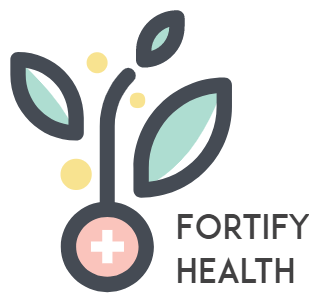

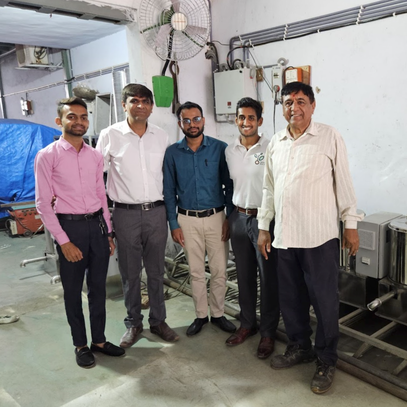
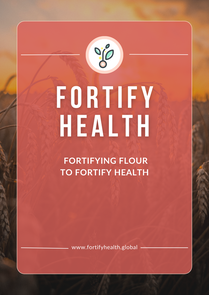
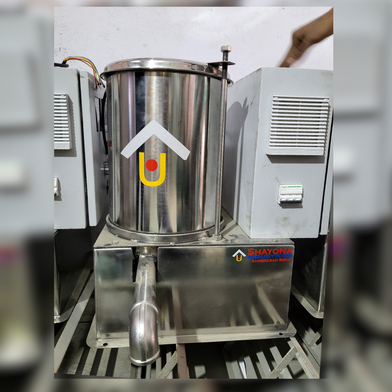
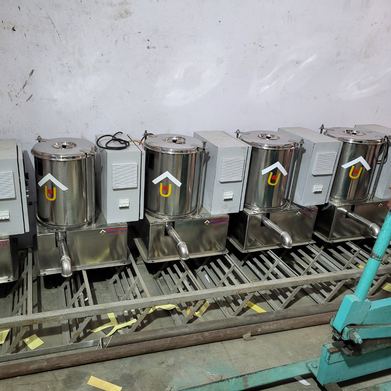
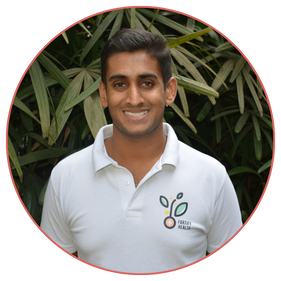
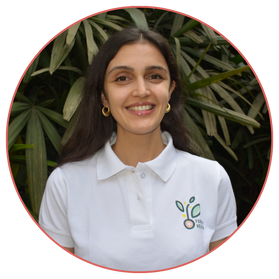
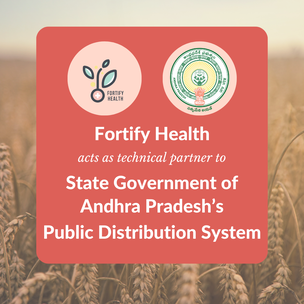
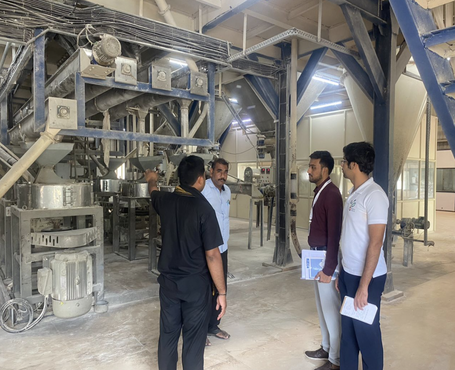
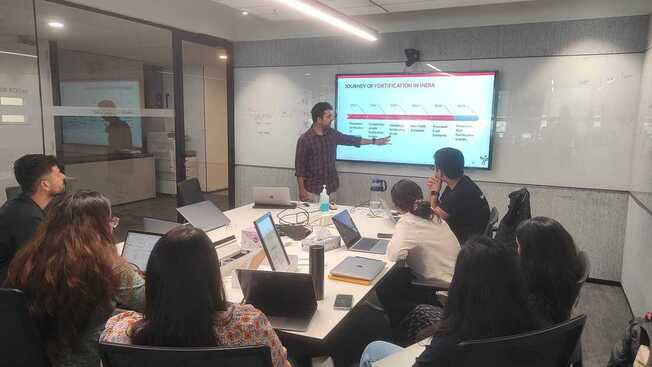
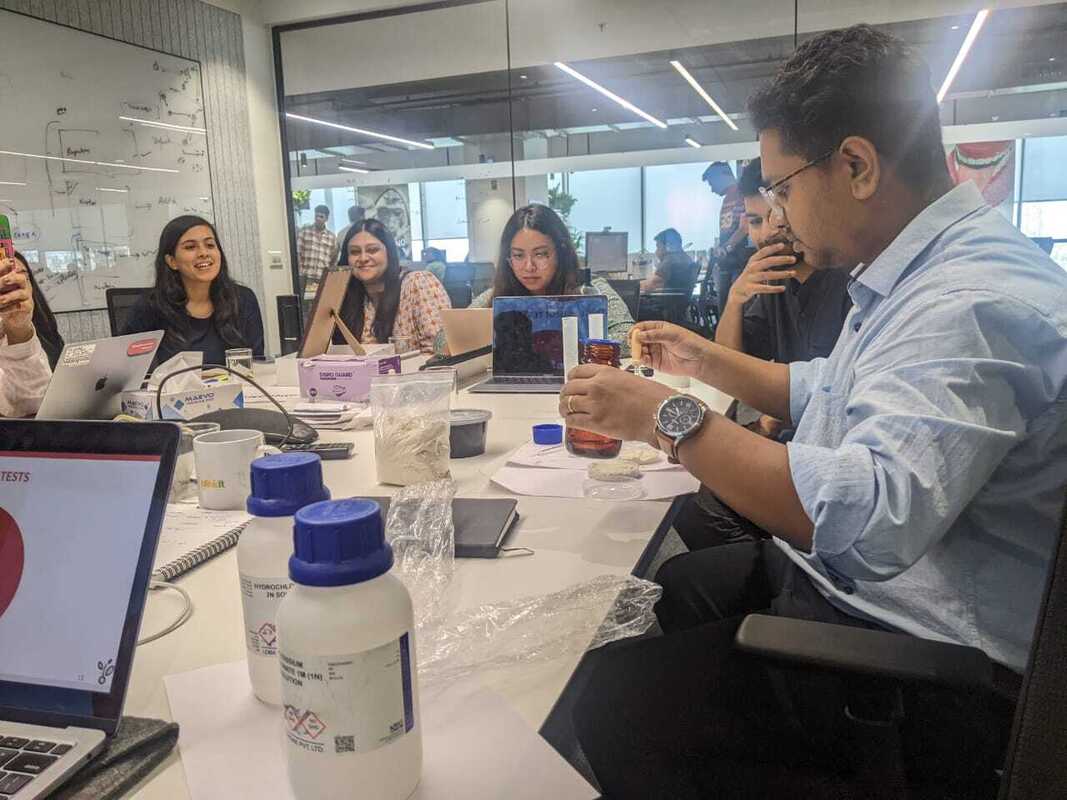
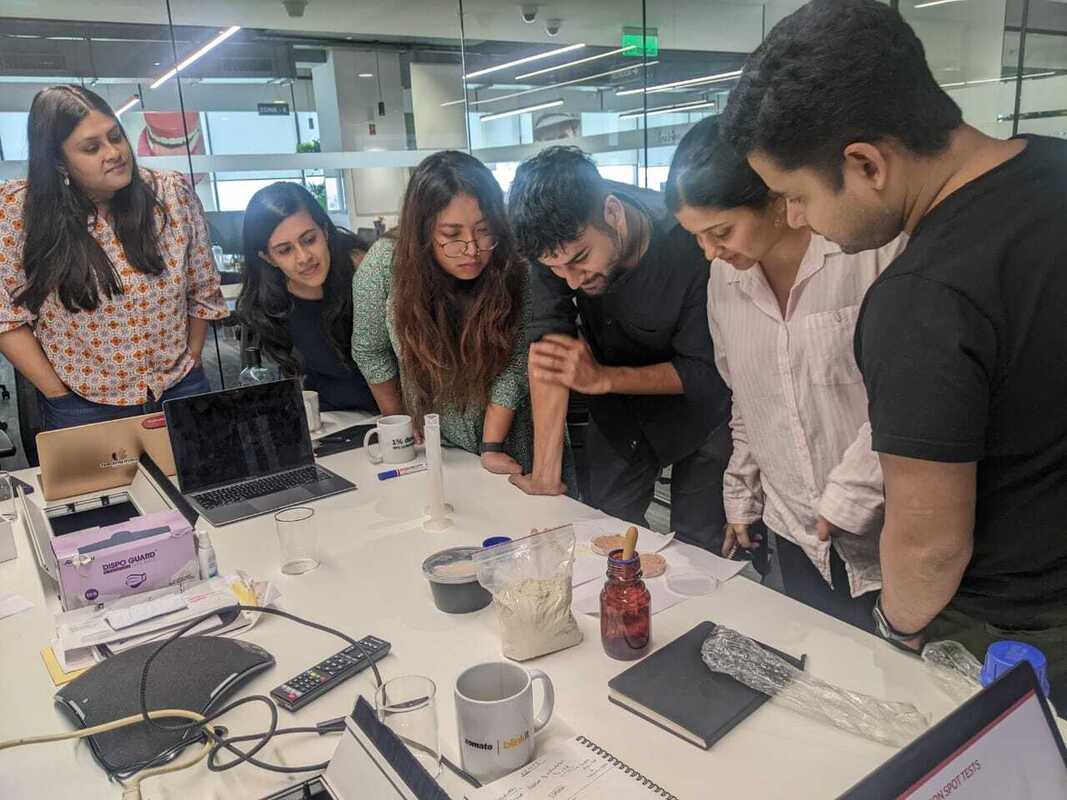
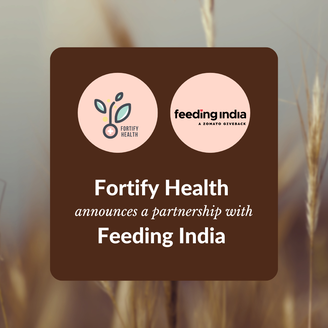
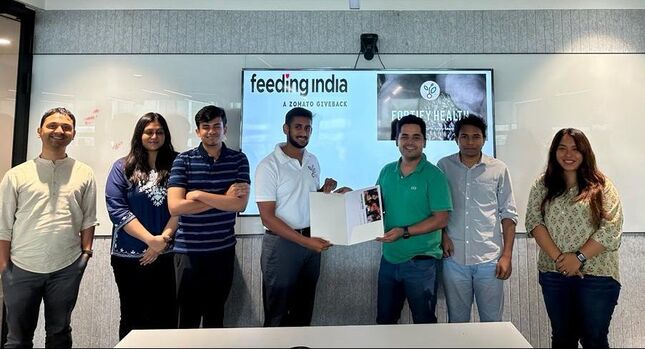
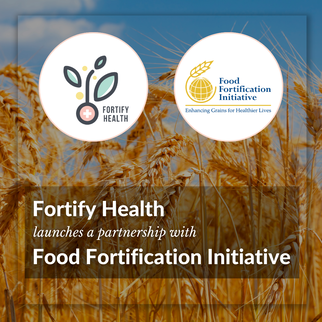
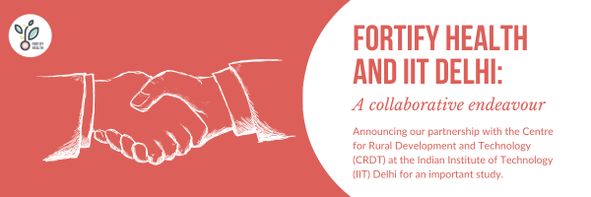


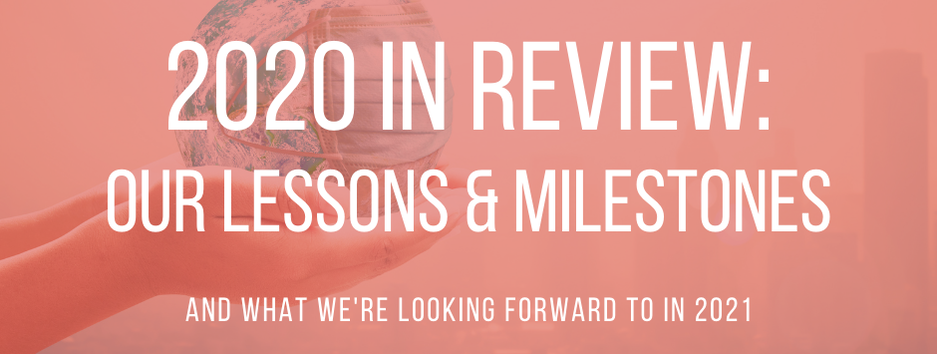
 RSS Feed
RSS Feed
